The serendipitous encounter between Hermes’ CEO Jean-Louis Dumas and Jane Birkin in 1981 culminating in the birth of the Birkin bag is now legendary. Apparently, when sat next to the actress on a fight, Dumas observed that she was struggling to contain belongings in a bag carried at the time and the actress admitted that finding a chic but practical bag was a challenge. This encounter inspired the creation of one of the most coveted fashion icons of our times, named after the movie siren.
The production and craftsmanship involved in the construction of each piece is equally fabled. While time spent on creating a Birkin varies depending on the style, size and materials used, it is said that it takes the minimum of 18 hours to finish a bag. Each piece is handcrafted by a single artisan who has spent several years training in specialist stitching and leatherwork techniques, some dating back to the Middle Ages, all of this to ensure consistency and flawless finish of this arm candy.
Although Hermes stores are often teasing with Birkins on display, they are rarely available to mere mortals and this scarcity factor has turned the bag into the fashion’s most wanted item. While some are fortunate to get their hands on a Birkin through an established relationship with a Hermes store assistant or lucky walk-ins, the reality is that most people who put their names on a waiting lists do not stand the chance of ever owning the luxury bag.
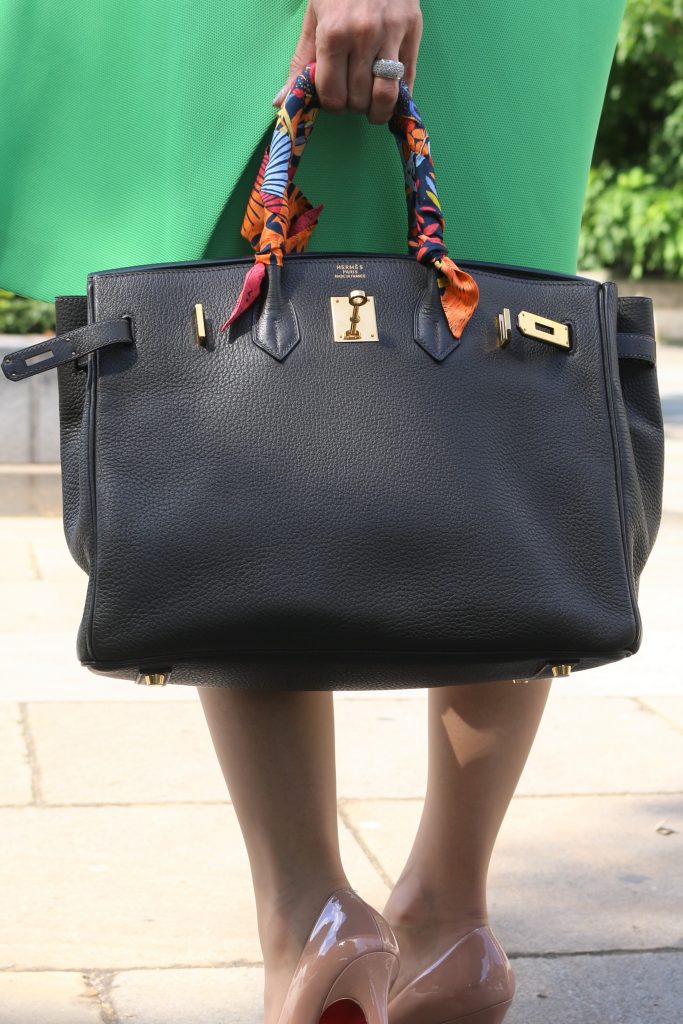
Because of this phenomenon determined fashionistas wishing to add the dream bag to their collection are increasingly reaching out to second-hand luxury online retailers such as Vestiaire Collective or RealReal. Unsurprisingly so, with the soaring demand meeting limited supply the second hand market has calibrated the value of this timeless piece above its regular retail price with some brand new bags in popular colours selling for nearly double the amount and 15-20 years old Birkin in a reasonably good condition is sold at the price of a new bag. Still, a 15-year-old Birkin is better than no Birkin at all.
However, with the second-hand market being frequently the only way of securing a Birkin, the glum reality is that many Birkin seekers are risking falling prey to opportunistic counterfeiters who have flooded the market with high quality replicas. That is why for anyone who has given up hope of buying a Birkin directly from Hermes and who is considering using second-hand channels, the minimum threshold should always be using companies providing Birkin authentication service ideally with a certificate, albeit there is no guarantee that this will always be a fool-proof process. One of such companies providing Hermes authentication services is Bababebi. Still, I do not think there should be any stigma attached to trying to acquire a Birkin through whichever means are necessary. A girl has got to do what a girl has got to do!
Having been lucky enough to own a few Birkins, I wanted to share my experiences of this fabulous bag and provide a feedback regarding pros and cons associated with this particular design. As I tend to lean towards larger bags which are best suited to my lifestyle, the review below concerns Birkin 35, the preferred size for all my Birkins. Hopefully this can be of some assistance to anyone who is considering breaking the bank and investing in this timeless but highly indulgent fashion item.
Because there is a lot of information to share, I will break this review into two parts, with Part 1 concentrating on aspects such as aesthetics and construction of Birkin 35, size, weight, leather and the date stamp. Part 2 of the review will focus on assessing matters such as durability and functionality of Birkin 35, the Hermes Spa, and consider if it provides a true value for money.
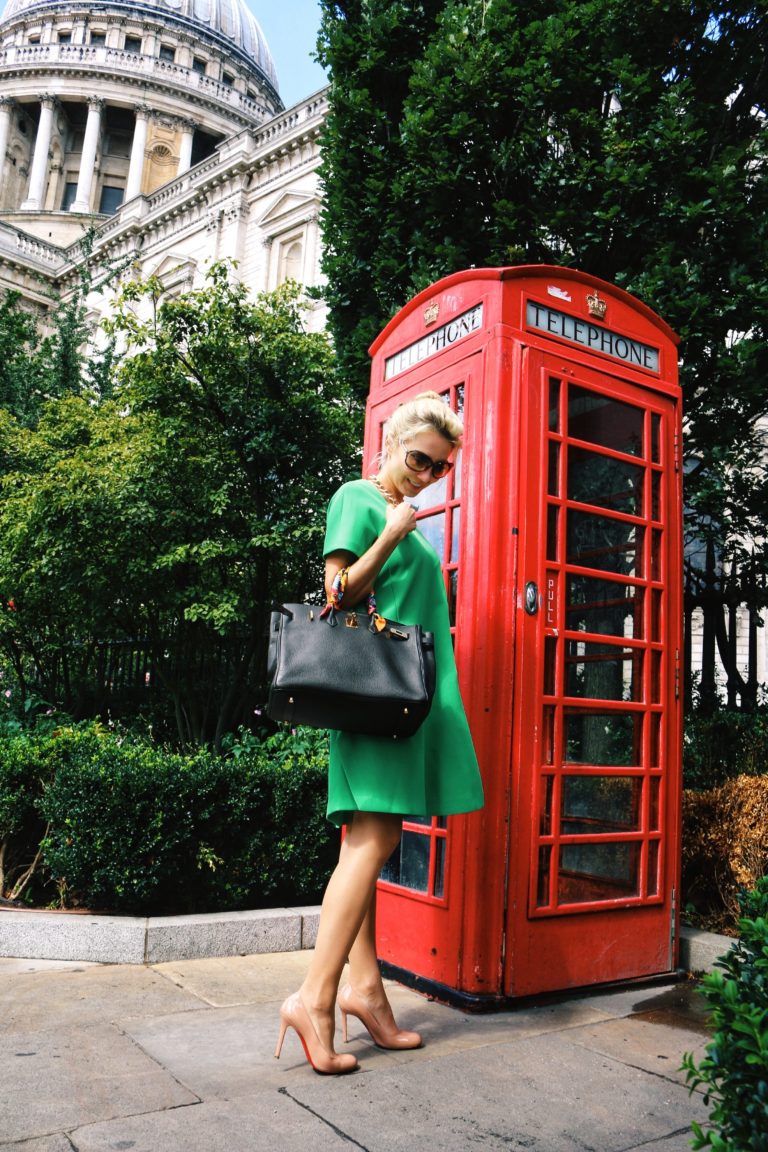
Aesthetics of Birkin 35
There are only a few fashion pieces which have been elevated to the icon status and these include the Burberry trenchcoat, the quilted Chanel 2.55 bag and, of course, the Hermes Birkin bag. What makes Birkin so special? Paradoxically, its boxy, rectangular shape and minimalistic finish convey a modest and unpretentious feel, yet Birkin has secured a place in the league of the most attention-commanding designs.
The bag features double top handles and no additional attachments, chains or straps by which it can be carried. One of the most recognisable aspects of its design is the flap and turn lock closure.
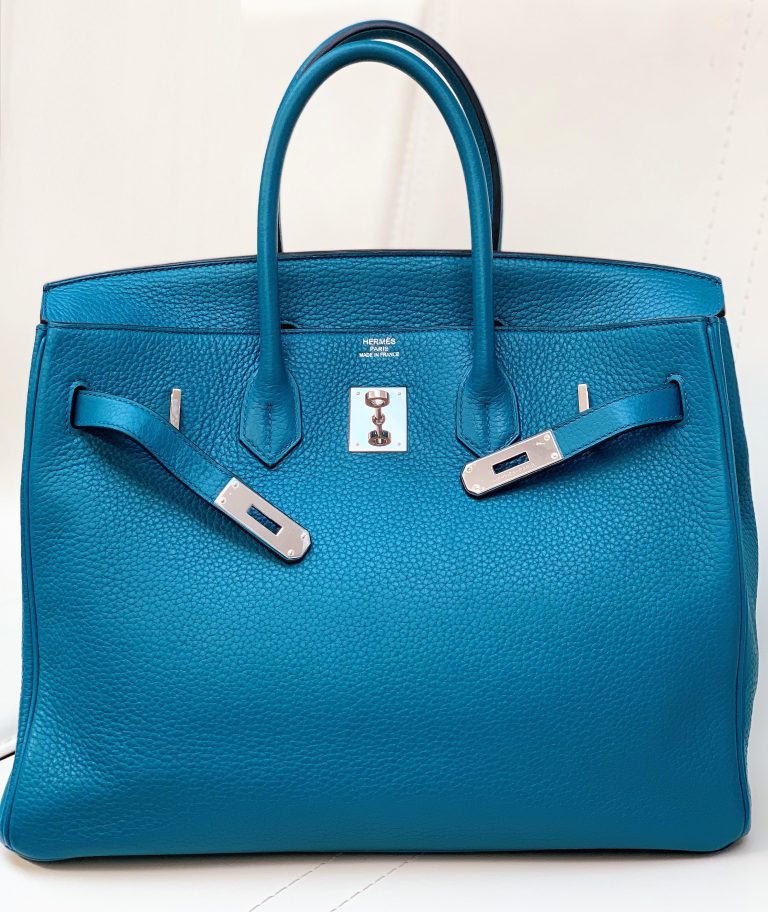
The detailed flap can be tucked inside the bag to give it a more relaxed look or drawn over the front to secure its contents with the help of a turning buckle, straps with a metal plaque (one of which has the engraving “Hermes – Paris”) which will be placed over the buckle closure and two brackets to hold the straps in place.
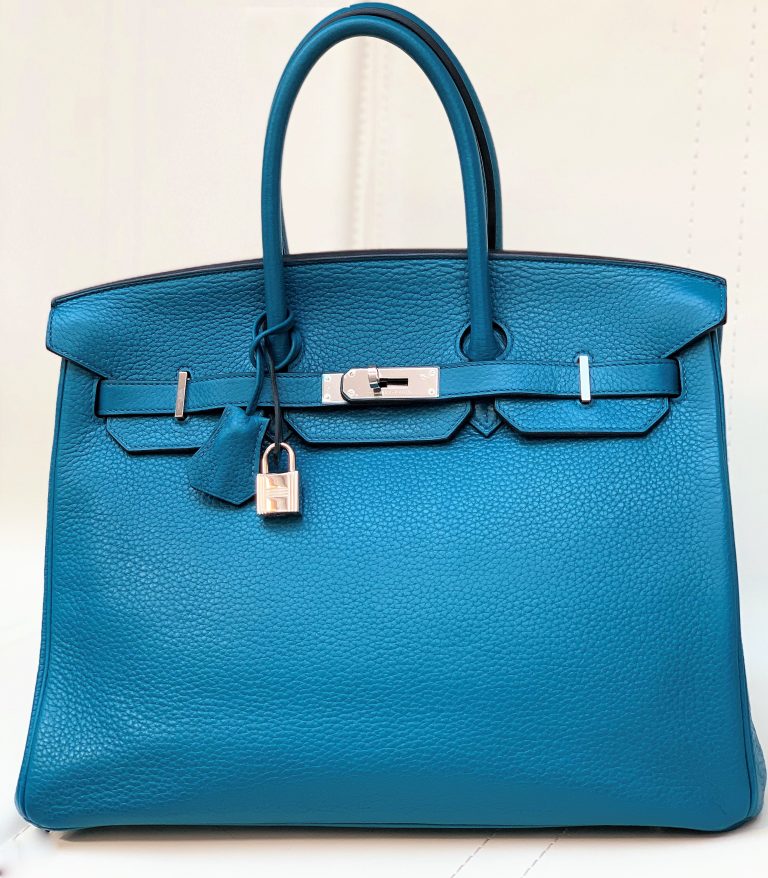
There is an optional clochette which can be looped through the handles containing a lock and two keys for additional fastening of the bag with when the flap is flipped over the front, altogether measuring approximately 33cm. Both the key lock and the keys are marked with serial numbers, one on each key, and two numbers on the lock (there used to be just one). The clochette comes with its own mini dustbag/pouch with a Hermes logo print.
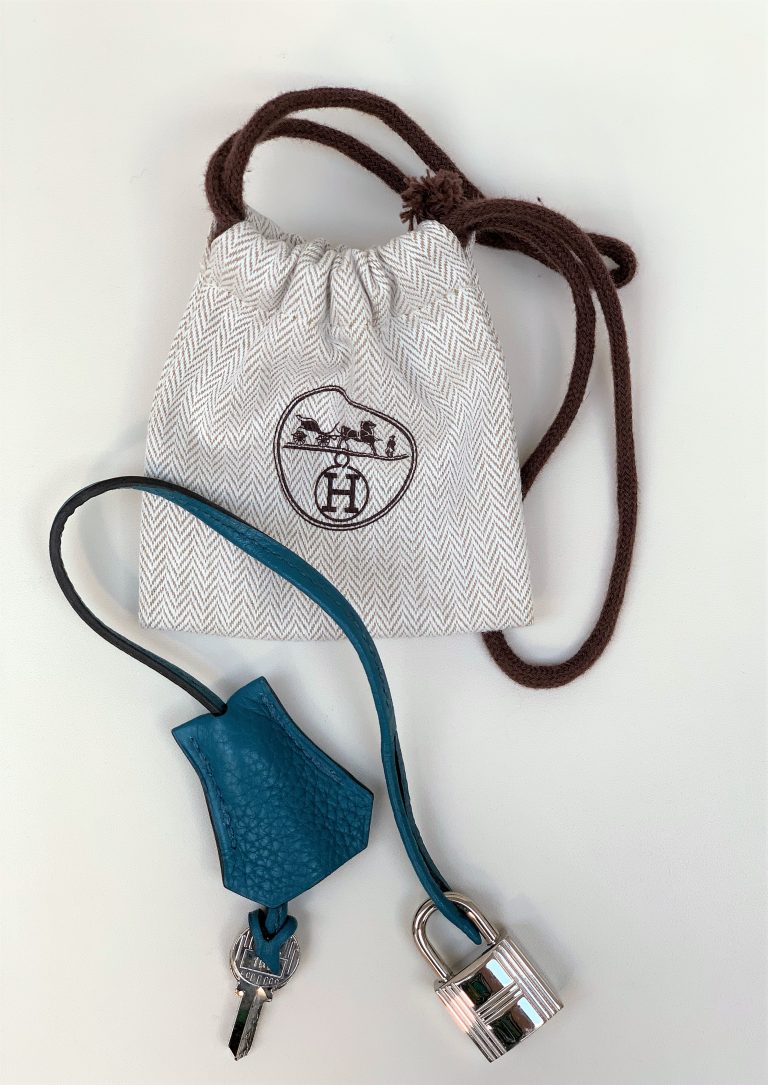
The most common choices of hardware, Palladium or Gold, reflect the colour of the metal finish used on the buckle, base studs and the lock and key of each Birkin. There are other finishes available, for instance Rose Gold, but these are rare. The Gold hardware is in fact a gold-plated metal so, to denote this, you will find a small mark next to the words “Hermes – Paris” on one of the metal plaques attached to the strap. There is no similar marking on the Palladium hardware.
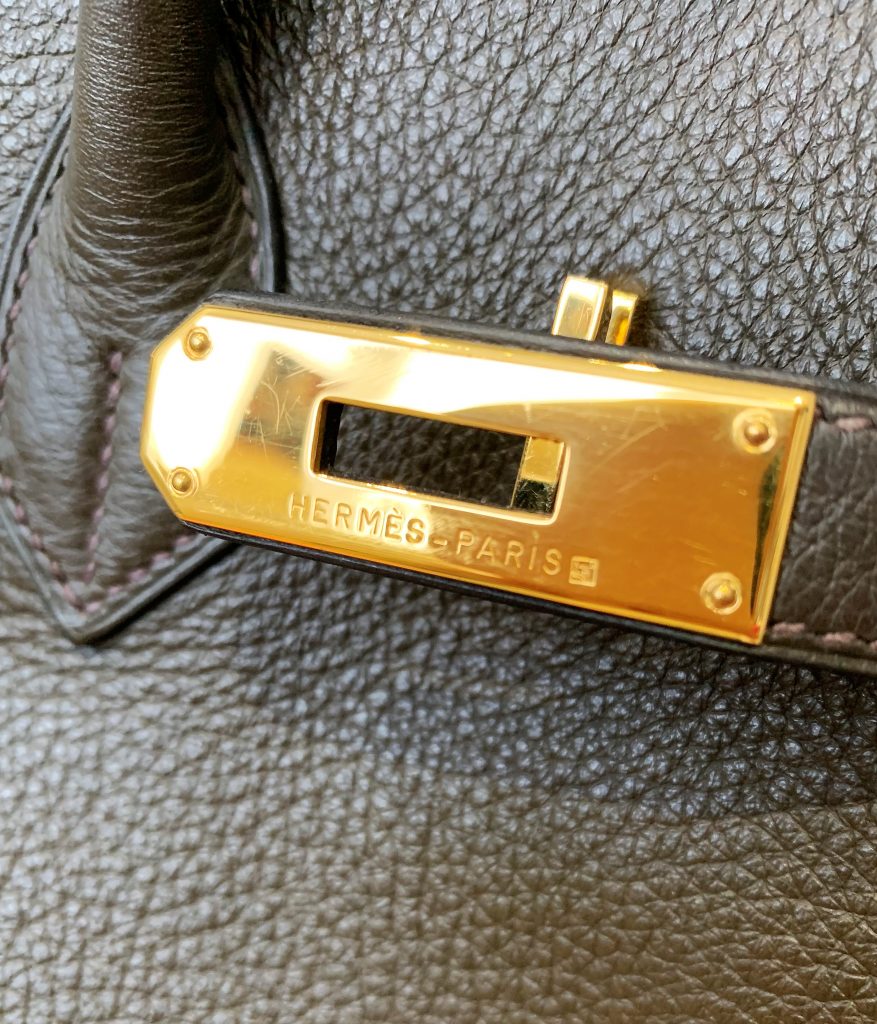
The bag has a relatively simple, unlined leather interior with two internal pockets, one with a zip, both measuring 24cm in width. The zip has the Hermes logo engraved on both sides of the slider. There are no additional design aspects such as external slip pockets or an internal phone pocket.
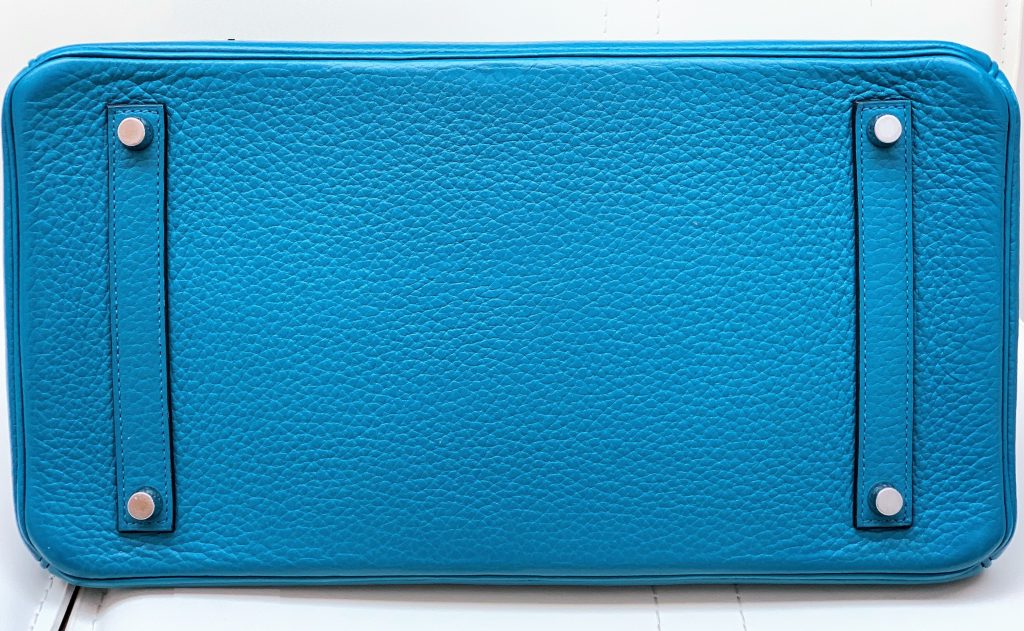
To protect the base and the corners of the Birkin, and to help it stand upright, the bottom is equipped with four clou, namely four round studs in a slightly trapezoid shape.
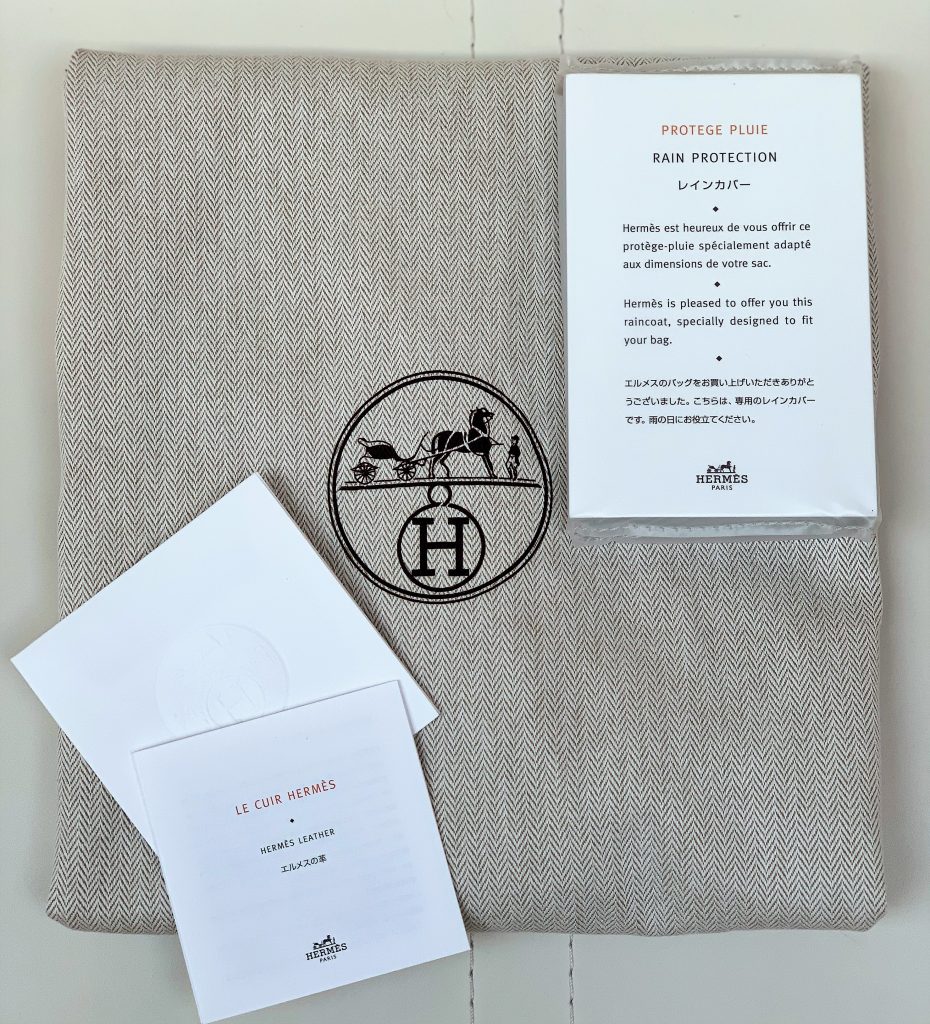
Each bag is accompanied by a dustbag, two raincoats and a small leather care booklet. [Back to Menu]
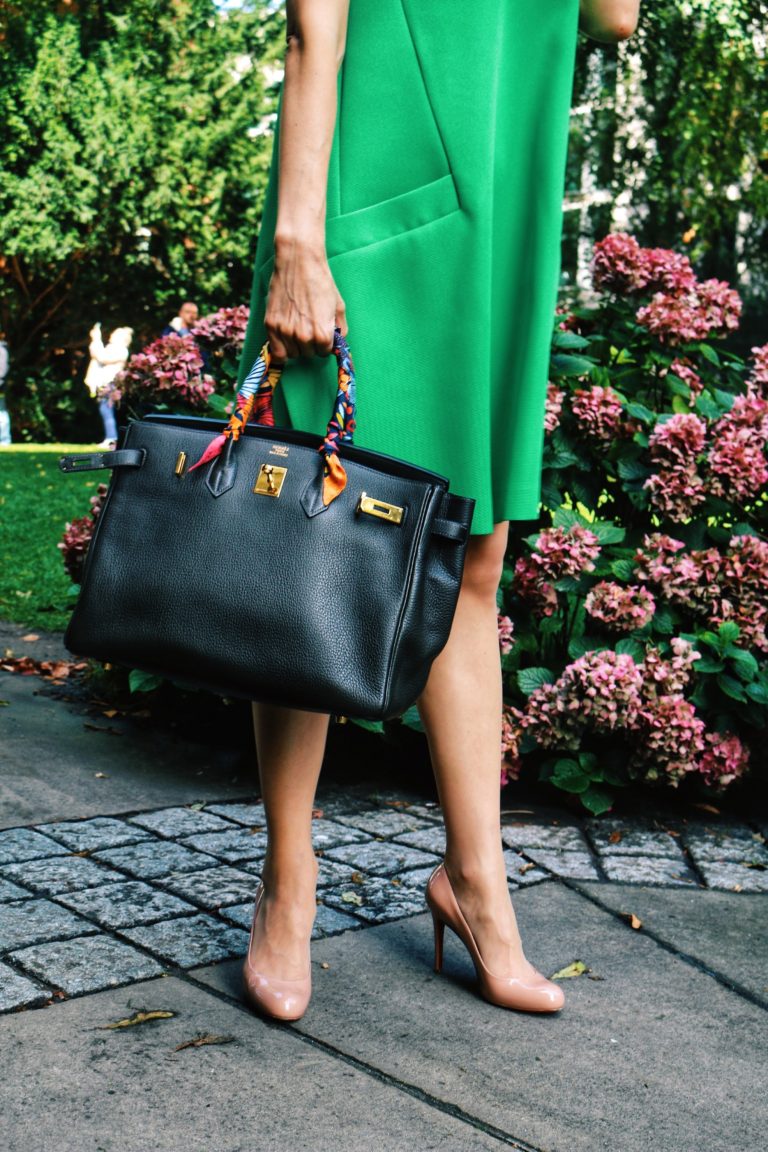
Blind Stamp
As a proof of authenticity, Hermes have introduced a Blind Stamp or a Date Stamp system consisting of single letters or letters in shapes reflecting the year in which the bag was created. The stamp may be accompanied by additional symbols denoting the name of the artisan or other marking related to exotic leathers, employee sales etc. Until 2016, the Blind Stamp could be found underneath one of the fastening straps but now it is located on the inside near the back flap. The Blind Stamp system can be decoded, as follows:
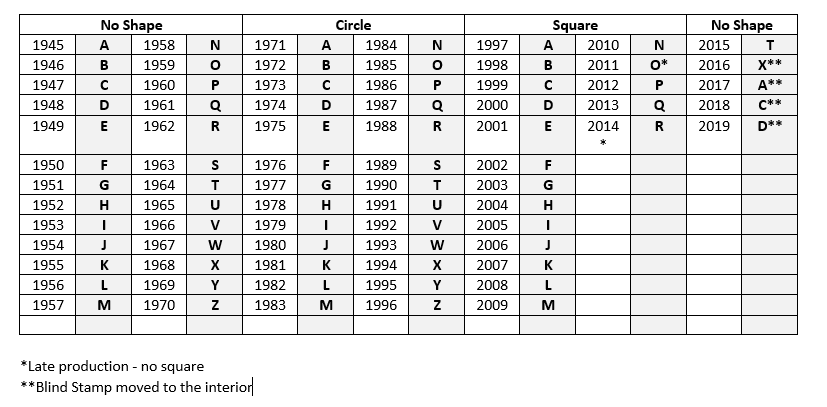
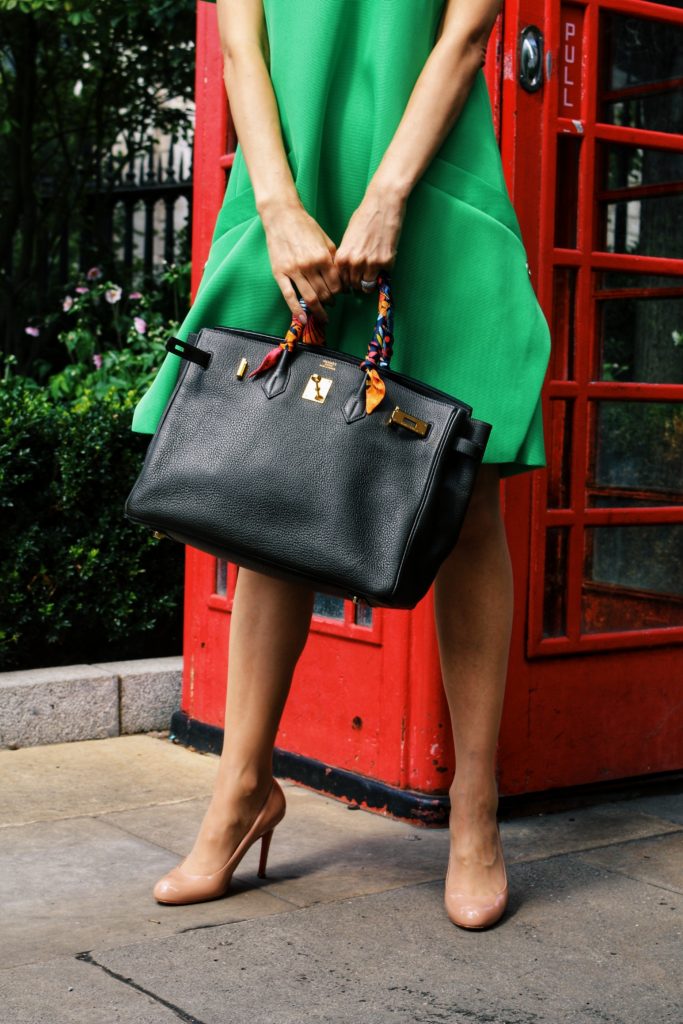
Size, Weight and Leather in Birkin 35
Birkin bags are sold in four sizes namely 25cm, 30cm, 35cm and 40cm. “The mini-Birkin” measuring 25cm is particularly rare and often viewed as a collector’s item. Birkin sized 40cm, also known as “the travel Birkin”, is large and is the original size of the luxurious bag. The most popular model is Birkin 35, the size I like the most because of its spacious interior and versatility. The dimensions of Birkin 35 are 35cm X 25cm x 18cm.
Birkins are available in a variety of leathers including Box Calf Leather, Togo, Clemence, Epsom, Fjord and Swift (formerly Gulliver) to name just a few. There are also exotic leathers such as Crocodile, Ostrich, Alligator and Lizard coming with an appropriate price tag. Each leather type has a different feel, resilience and weight. For instance, the popular finishes such as Togo or Clemence are more scratch resistant than e.g. Swift whereas the exotic leathers are said to be lighter.
As my bags come either in Togo or Clemence finish I wanted to concentrate in this review on differences between these two leathers and share my observations. Although similar looking and often difficult to distinguish, there are some subtle difference between them. Firstly, Clemence is made of the hide of a young bull whereas Togo is made of baby calf. The origin of the hide affects the leather itself making Clemence slightly softer and slouching over time whereas Togo remains more rigid and retains shape. There is also a marginal difference between the texture of each finish with Togo being more pebbled and grainier but the grain being marginally more pronounced in Clemence.
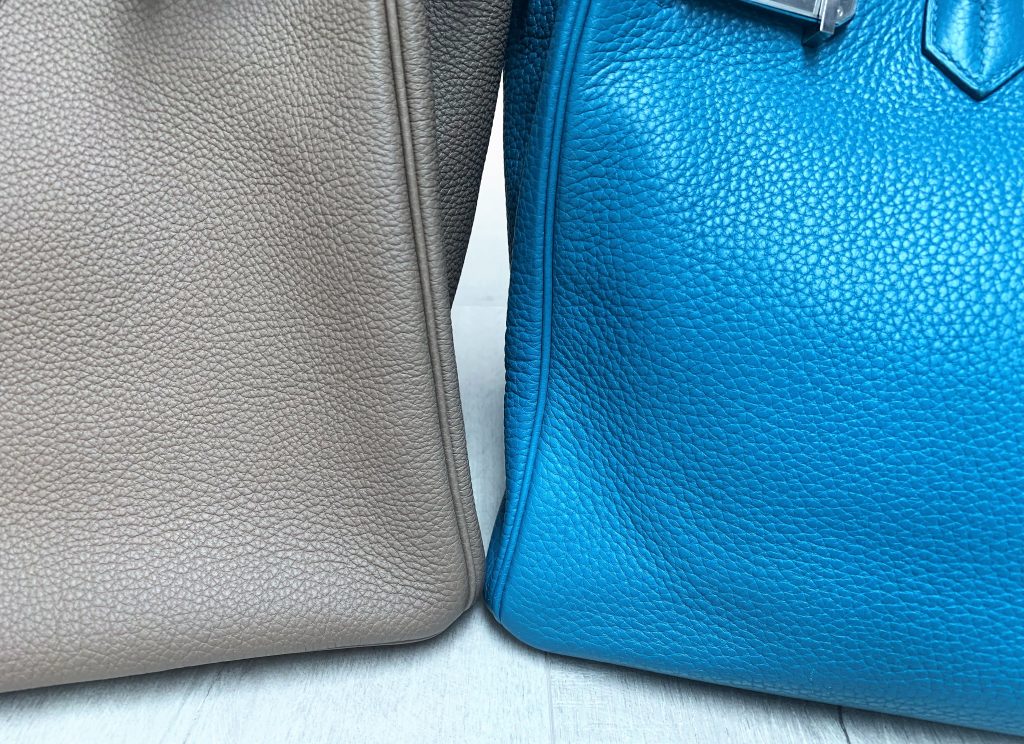
The choice of leather affects the weight of the bag too making Clemence being slightly heavier. An empty Birkin 35 in Clemence weights just over 2kg whereas in Togo it weights under 2kg, according to my luggage scale.
Personally, I like the feel and look of both bags, and would recommend any of these two finishes for anyone who is looking for a long-wearing bag. [Back to Menu]
Please see Part 2 of my Birkin 35 review to read about durability and functionality of the bag, the Hermes Spa service and my assessment if it constitutes a good investment.
Photos by Badiu Photography and Unwrapped
© Copyright Unwrapped (2019) All Rights Reserved



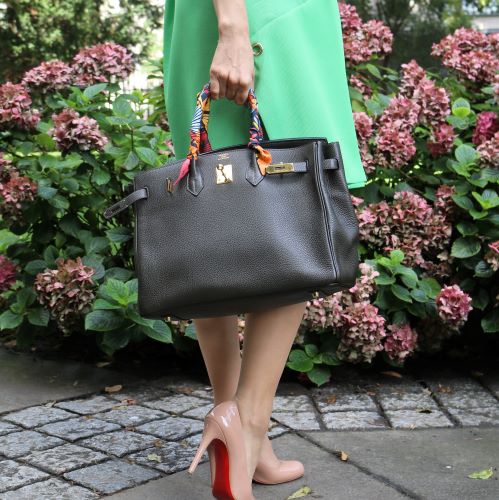
There Are 4 Comments
It’s actually a cool and helpful piece of information.
I am satisfied that you just shared this helpful
information with us. Please keep us informed like this. Thanks for
sharing.
Thank you! I’m glad you have found it useful 😚.
What twilly/scarf do you use on the black Birkin in the picture with the green dress?
Hi Eva! Many thanks for checking out my blog 😊. So the scarves you can see in these photos are Hermes twillies. Unfortunately, I cannot remember what this style is called as I bought them a few years ago. The main colours featured on this design are blues, orange and red. The bag itself is actually olive green, but it’s a very dark shade of green so it looks nearly black, or dark brown, depending on the light. I hope this helps ☺️.